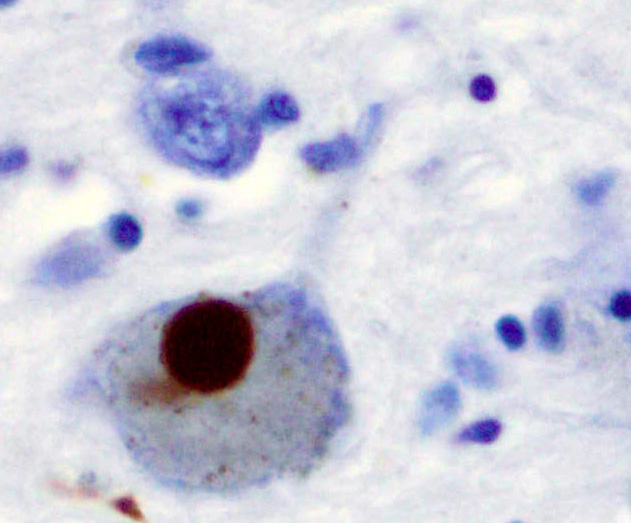Studies of the SNCA gene in Parkinsons disease
 Brain tissue from Parkinson's disease patients typically exhibits microscopic inclusions known as Lewy bodies. The main component of this pathological hallmark lesion is α-synuclein. This protein is encoded by SNCA on chromosome 4, the first gene to be linked to Parkinson's disease.
Brain tissue from Parkinson's disease patients typically exhibits microscopic inclusions known as Lewy bodies. The main component of this pathological hallmark lesion is α-synuclein. This protein is encoded by SNCA on chromosome 4, the first gene to be linked to Parkinson's disease.
Point mutations and multiplications of SNCA cause familial dominant parkinsonism. While these mutations are extremely rare, there is also common non-coding variation in the SNCA region, which modulates disease risk in sporadic patients. A strong SNCA association signal has been demonstrated in numerous studies, but little is known about what variants are functionally important and what mechanisms link genetic variation to the disease process (reviewed in Pihlstrøm et Toft, 2011). A deeper understanding of these questions could provide important insights about the pathogenesis of Parkinson's disease, and in turn possibly contribute to the development of novel therapeutic approaches.
Our current SNCA project aims to unravel some of the mysteries surrounding this keystone Parkinson gene. We combine different technologies and data sources from the same individuals to explore various hypotheses about functional variants and mechanisms. Our approaches include targeted resequencing by next-generation technology, fine mapping through SNP genotyping, investigations of gene expression and methylation, and functional studies of genetic variants.
Main responsible for project: Dr. Lasse Pihlstrøm
Funding: Research grant from South-Eastern Norway Regional Health Authority
